How to navigate the various government agencies (published September 2015)
Every sailor, naturalist and even school kids have a vision of what the Galapagos is like. Giant land tortoises, islands topped by isolated volcanoes, Darwin’s finches flying through the bushes and sea iguanas heading out to sea for breakfast, not to mention penguins. For any cruiser who plans a trip to the South Pacific from Central America, Panama or Ecuador, your course will usually take you right by the islands of the Galapagos and a once-in-a-lifetime chance to visit. There is no easy way to visit the Galapagos on the cheap, but by planning ahead you can get the most out of this fantastic, other-worldly place.
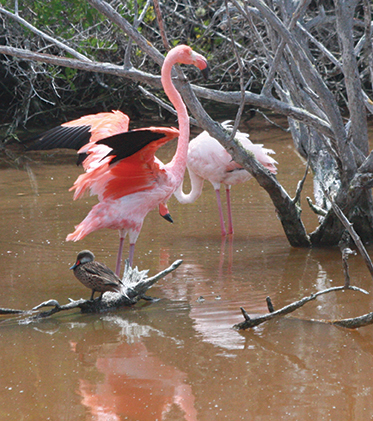
I’ll discuss the various ways you can enter the Galapagos with your boat along with the details as they appeared this season (2015). Be aware that the application of the rules within the Galapagos islands can, and very often do, vary from year to year. One reason is the Navy Port Captain in each entry port is charged with enforcing the rules as they apply to visiting yachts. The Port Captains are regularly rotated between Ecuadorian ports and a new Port Captain may have a slightly different interpretation of the rules. Another reason for the changes is the sheer number of government organizations that are involved with the clearing in process. They may have overlapping rules and may have some inter-agency competition going on between them.
Agencies such as the Navy, represented by the Port Captain, Health and Sanitation, Immigration, Customs, and the National Park are all involved in clearance. The Port Captain and the National Park seem to have the most sway and effect on cruising boat clearances. Along with the official agencies, Ecuadorian Port Captains require that you use a local agent to clear-in and out (with no exceptions as far as I can tell).
There are two ways to officially enter the Galapagos. The first is to obtain a cruising permit, known as an ‘Autografo’, prior to arriving. The second is to just show up. Each one has advantages and disadvantages. Neither one is cheap.
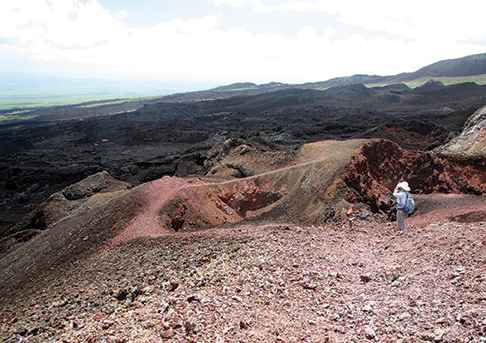
GETTING AN AUTOGRAFO
Obtaining an Autografo prior to arriving is easy. Contact a Galapagos agent via e-mail, tell them the details of your planned visit and get a quote for their services and fees. Once you have engaged their services, you will send them copies of your ship’s documentation and copies of the passports for all crew that will be onboard. The agent will create the necessary forms and send them to Quito on the mainland. After they have been approved, the Autografo will be sent back to the agent. It’s best to start this process about a month or six weeks prior to your anticipated arrival date, although your agent may be able to deal with a shorter time frame. Your Autografo will be valid for 90-days from the day you arrive in the Galapagos Islands. We used Bolivar Pesantes of the Naugala Agency (bolivar.pesantes@hotmail.com) as our agent. Not a lot of English, although he does fine in e-mails and face-to-face pantomime, but he is a real fixer when it comes to any issues with officials (Other agents are listed on Noonsite.com).
The information that the agent will need in advance includes the following:
• Boat name, official number, and copy of documentation.
• Captain’s name, crew names and copies of passports.
• Approximate date of arrival.
• Approximate date of departure (since you will get a 90-day cruising permit, tell the agent the latest you think you’ll be leaving.) These can be adjusted as the time gets closer.
• The ports you wish to visit.
The ports you will be allowed to visit are very limited. You may not anchor in any anchorage or bay except the designated ports. Most agents offer three ports. One on San Cristobol, one on Santa Cruz, and one on Isabel. Some also offer Post Office Bay on Floreana (aka Santa Maria). While it might seem at first that you’ll want to visit all the available ports, for a lot of reasons it isn’t necessarily the thing to do. The available ports are just that, small harbors or ports, often with poor anchorages. You cannot go to any of the nearby anchorages. In most of the ports you cannot take your dinghy anywhere except to the dock, so you are very limited on what type of exploration you can do on your own. This means that to see the Galapagos you will need to join up with local tours.
We ended up with a three port Autografo. We stayed in the Galapagos about a month, spending about 10 days in San Cristobol and the remainder in Isabel. We decided to skip Santa Cruz as the anchorage was very crowded with local tour boats and in-use moorings with a lot of swell running into it. The town, Puerto Ayora, is the most touristy of the allowed ports.
The basic break down for clearance fees for the boat and two crew members are:
• $210 for the reception and arrival.
• $100 for the service inspection and quarantine.
• $40 for Immigration service.
• $200 to Galapagos National Park
($100 per crew member).
• $20 Governing Council Galapagos.
($10 per crew member)
• $30 per copy and transportation
authorities.
• $40 for collection and transporta-
tion of waste.
• $25 for inspection of the boat’s hull .
• $100 for inspection of the boat
(hull) by Galapagos National Park.
• $500 for the services of the agency.
total: USD$1265
These will be fairly consistent between agents, with the agent’s fee varying a bit depending on how many islands you visit and how much they want your business. The agents do a fair amount work, since on each port you enter the agent will need to clear you in and out. The first port of entry will be the most involved.
You should contact your agent when you start your passage to the Galapagos. When you are a day or two out from landfall and know your arrival date, e-mail your agent to tell them when you plan to arrive. The official port of entry is Puerto Baquerizo Moreno on Isla San Cristobol. This bay is also known as Wreck Bay, but is typically not prominently labeled this way on your electronic charts. Baquerizo is the government headquarters for the Galapagos. This makes the town a little more interesting, as it is more than a tourist town.
You can enter Wreck Bay in daylight using the range that is shown on the harbor charts. It is a straight forward entrance. There are yellow mooring buoys toward the port hand side that you can tie up to for no cost during your stay. While the center of the harbor may look empty for anchoring, it is the location where the large supply ships anchor. Most of the time there will be free moorings available. The bottom tends to be scoured rock, making anchoring less desirable. The moorings have a large bit in the center and are on plastic floats. Dropping two bow lines over the bit by setting them as a lasso makes tying up easy.
After you are moored your agent is likely to be quickly dropped off by a water taxi. If not, send them an e-mail or call. Plan on a couple of days, excluding weekends, to get checked in. In Baquerizo you will typically be visited by six to 12 officials. The best policy is to let your agent do the talking; don’t offer up fluent Spanish and answer only what is asked. If its hot, offer everyone a Coke.
THE BOAT PREPARATION
We’ve already discussed what you need to do to obtain your Autografo and agent. There are a few other things that need to be done before you leave port enroute to the Galapagos. The first is to get a Fumigation Certificate. These are available in Panama (check with Tito, listed under ‘taxi drivers’ in the online Panama City Cruisers Guide). The clear emphasis here is on Certificate, not on Fumigation. We paid USD$25 for our certificate. If you are doing a Canal transit and rent your lines from Tito, then get a Fumigation Certificate at the same time.
The other thing you need is to have an immaculately clean hull on arrival. Most cruisers who leave from Panama clear out of Panama in Panama City and then spend a few days in the Las Perlas Islands waiting on weather. Just before you leave you should do a thorough bottom cleaning. So, how clean does the bottom need to be? When we checked into the Galapagos (in February 2015) we were inspected on two different days by two different government agency divers, each videoing our bottom with a GoPro. Some boats that have failed the inspection have been told to take the boat outside the park boundaries, 42 miles offshore, and have the bottom professionally cleaned before re-entering. We, like many boats this year, stopped a few miles offshore of San Cristobol and cleaned the bottom. It was really surprising how much green slime had accumulated during our six day passage on five month old bottom paint. If, for any reason, you think your bottom is not clean when you arrive let your agent know before the officials arrive—fixers are a good thing.
There will be a fairly serious food inspection by the Health and Sanitation agent(s). They want to see a clean boat, so make it neat before you are inspected. You should have a ‘garbage plan’ on board; taped signs above each of your garbage and recycling bags indicating what goes in each. Also include a sign indicating that nothing goes overboard. When our agent initially came onboard, he had us peal or juice all our citrus fruit. He also took with him our garbage.
The food inspector was particularly interested in our rice and pasta collection. Like most cruisers heading to the South Pacific, our collection was impressively large. He looked very careful for weevils. He also wanted an explanation for what the Bay Leaves in the rice were for; to kill the weevils.
The last inspection was by the Port Captain. From what we’ve heard from other cruisers, these have varied a bit from boat to boat. For us, it was going down a checklist asking about items we had onboard like life rafts, VHF radio, HF radio, EPIRB, rudder, number of life jackets, etc. Some boats were asked for their radio station license.
Immigration was straight forward with USA or Euro passports (check ahead with the Ecuadorian embassy for others). We were given the same 90-days that was on our Autografo cruising permit.
TAKING THE “NO AUTOGRAFO” APPROACH
The other way to visit the Galapagos is a little simpler—just show up. In this case you will only be allowed to visit one port—the one you arrive in. Unless you have specific multi-day tours planned in another port, I’d recommend Isabel as the most cruiser friendly anchorage—for the Galapagos—and the one where you will be able to get the most wildlife experience for a reasonable investment. In addition, Isabel has fewer officials available for the clearance process (no immigration and currently no GoPro cameras for videoing the bottom), possibly making clearing in a somewhat simpler process.
If you show up without an Autografo, you should still do everything under Boat Preparation above. In addition, there is one more important step. When you get your exit Zarpe (clearance papers) from your last port, make sure they DO NOT indicate the Galapagos as your next port. If you are ultimately going to French Polynesia, then just put French Polynesia on your Zarpe. Since an Autografo is required to visit the Galapagos, some Port Captains have interpreted a Zarpe with a destination of the Galapagos and no Autografo as deliberately flaunting the rules. In this case, some boats have been told to leave the next day.
Arriving without an Autografo still requires that you use an agent to clear in. Since you are only visiting one port, the overall costs should be lower than with the multi-port Autografo. Most boats we talked to paid about USD$800-850 for the boat and two people. The amount of time you are granted is dependent on the good-will of the Port Captain. In some cases they have only given three to five days, but you will typically be given 21 days. If you initially get less, put your agent to work trying to get the Port Captain to relent and allow the full 21 days. You will not be given more than 21 days.
Even if you aren’t planning on getting an Autografo, you can still contact an agent prior to departing via e-mail. If you arrive at Puerto Villamil on Isabel without an agent, I’d recommend contacting the agent JC (who works with Bolivar’s agency in San Cristobol) on VHF channel 72 (hail ‘JC’). Do not go ashore before you have been visited by the Port Captain. If you do, you will start the whole check-in process off on the wrong foot and you may even be asked to leave.
NO ONE WILL SEE ME IF I ANCHOR ONE NIGHT
Some cruisers like to take the cowboy approach to checking-in and dealing with officialdom. The Galapagos has many really interesting anchorages that would be a dream to explore. They are visited continually by the small and medium sized tour boats that bring the bulk of the tourism to the islands, often staying overnight. Each tour boat, no matter how small, has at least one official National Park guide onboard. When a park guide sees a private vessel in any park anchorage, they call the vessel name into park headquarters. If the vessel is registered and has its own park guide onboard, then all is well. If not the Navy is contacted and a Navy boat or perhaps a helicopter is sent out. The standard procedure, as it was explained to me, is that the boat is impounded and brought back to the closest official port. The captain and crew are flown to the Ecuadorian mainland. There they might spend months straightening the situation out and paying lawyers. Then once the paperwork and any fines are cleared up, they fly themselves back to the islands and pay the daily storage rate to recover their impounded vessel. Think about it.
THEY DON’T REALLY WANT CRUISERS
One of the locals was commenting to me that this year there had been fewer cruisers than before. I made the comment that with all the regulations and fees, it was pretty clear that they did not want cruisers in the Galapagos. His response was that National Park service would be happy if there were no locals living here and that they continually make things difficult for them as well. If you look closely at the maps of the Galapagos, you will see that the majority of it is a National Park, with a few towns excepted. As a cruiser, you are not allowed anywhere in the park without a park guide. This may include areas within your anchorage and severely limits most stand alone exploration you can do.
NOW THE GOOD NEWS
The Galapagos has an amazing variety of land, sea and air life. The animals have evolved in such isolation that they have a high threshold of fear for man, creating unlimited opportunities to get close and intimate with them. With a little planning and investigation you can do the few things that are allowed without a guide and take lower cost, biggest delivery, guided tours without entirely busting the cruising kitty.
Puerto Villamil on Isabel is probably the best place to be touring from a cruising boat. A couple of highlights there include:
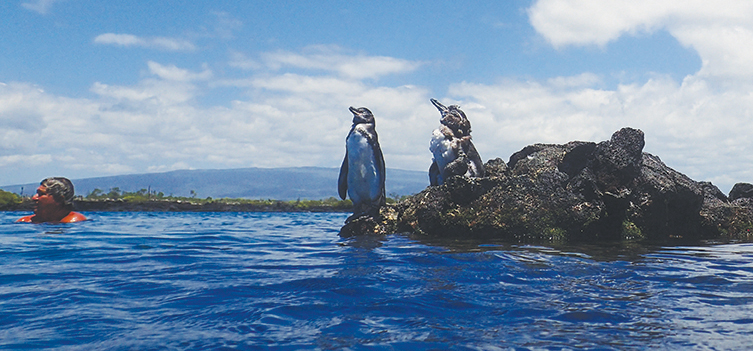
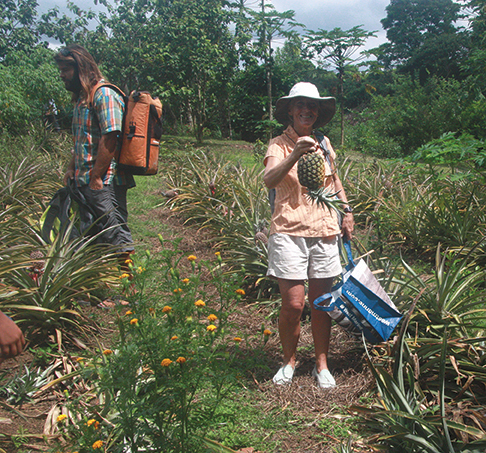
Watch the penguins dry out on the rocks near your boat during cruisers happy-hour and then seeing them hunting in the early mornings around your boat (but don’t try and take your dinghy over near their roosting place, as the park officials will come after you. We blew up our Standup Paddleboards and got severely chastised).
Rent mountain bikes in town (at US$2/hour) and ride along the beach trail for an hour to the Wall of Tears (a huge purposeless drystack wall that was built by prisoners kept on the island) and see sea iguanas and land tortoises in the wild on the way.
Take the guided hike to the Volcano Sierra Negro (about US $45 per person including a long taxi ride and a light lunch).
Take the boat tour to the Tunnels. This five hour tour included lots of snorkeling time (bring a wetsuit, it can get cold). We got up close with turtles, penguins, sharks and giant manta rays (US$80 per person including a light lunch).
Walk along the raised path through the mangroves and lakes on the west side of town, checking out the local duck species, land iguanas and flamingos until you reach the turtle breeding center (free tour).
Re-provision with fresh local fruits and vegetables from the organic farm (check with agent JC for a taxi ride up the mountain to the farm).
From Puerto Villamil you can take a ferry to Puerto Ayora on Santa Cruz (and from there onto San Cristobol) at about $25 per person one-way. This is the main tourist hub where multi-day sea tours are available. Last minute discounts are reportedly available for any ship that hasn’t filled up their cabins.
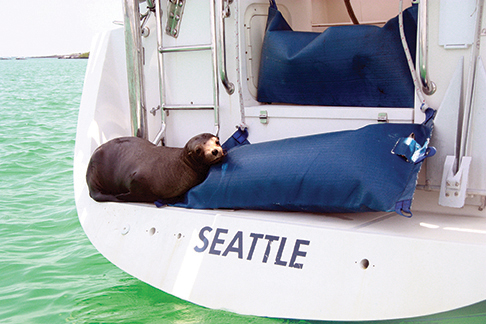 OTHER WAYS TO EXPLORE
OTHER WAYS TO EXPLORE
There are two other ways to tour the Galapagos. One is to book a cabin on one of the official tour boats. There are some superb, smaller craft, which carry less than 20 passengers on board along with multiple National Park guides. The weekly rates are fairly high, but the once-in-a-life-time-experience value is also way high. (take a look at the elegant 1930’s-era ‘MV Grace’ online, a tour that can be yours for US$5,800 for eight days).
The other high-end way to see the Galapagos is on your own boat with a National Park guide. This approach is usually limited to the mega-yachts. Your check-in costs will go up considerably and you will have to pay for and house a private National Park guide at their daily rate.
IS IT WORTH IT?
How often do you plan to pass by the Galapagos? For us it was definitely worth it. Read Darwin’s Voyage of the Beagle, break up your long passage to the South Pacific, live with the small hole in your cruising kitty and add lots of very cool memories.
Paul Lever and Chris Hunter have been cruising full-time for the past four years. They’ve ranged from Seattle to Mexico, and Panama to Cape Breton and Nova Scotia. Their Outbound 44, Georgia, is currently in French Polynesia after another successful Canal transit and a visit to the Galapagos. Follow their adventures at svjeorgia.blogspot.com.
Panama to the Galapagos Passagemaking
Most boats that leave Panama for the Galapagos sail between January and May. The passage is about 900 miles. Pick up a course that passes nearby Isla Malpelo (about 230 miles off the Colombian coast), while giving Punta Mala enough clearance to avoid the enhanced winds and currents. Passing Malpelo close by keeps the boat in the most likely decent current and holds you more easterly
to make for a better course when the southerly winds arrive. You should obtain the latest OSCAR current predictions before you leave (see the website svsarana.com for directions). Staging from the Perlas Islands makes for a pleasant anchorage to clean the bottom and wait for weather.
In the earlier part of the year, strong northerly winds come through the Bay of Panama on a fairly regular basis. If you can wait for one of these northerlies, you can get a good push out of the Bay and perhaps for the first two or three days of your passage.
The other weather item to watch is the location of the ITCZ (Intertropical Convergence Zone). You’d like to see the ITCZ located north (see NOAA Weather Fax) of your location or petering out before it reaches the longitude of the Galapagos.
Passage times are typically six to 12 days, with a few die hards getting stuck in the ITCZ ending with greater than 20 day passages. If you can get a good boost when you leave Panama, then motor south through the calms till you reach the southerly winds,
you can have a quick and comfortable passage.
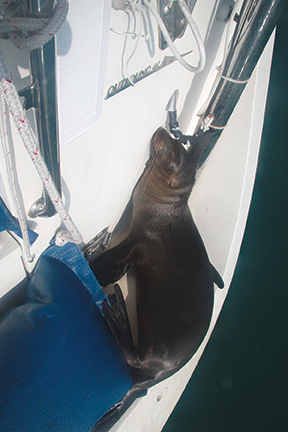 San Cristobol Sea Lion Security
San Cristobol Sea Lion Security
On San Cristobol the sea lions rule. It isn’t worth putting your dinghy in the water, as they will invade it if you leave it for more than 10 minutes. Instead, use the water taxi by calling ‘taxi-aquatico’ on VHF ch 14 ($1 per person). Our boat has a small swimstep and partially open transom. It took us a few days to perfect our anti-sea lion defenses. One evening we heard what sounded like the cough of a two-pack a day smoker in the cockpit. Sliding the companionway hatch open in the dark, there was a large male sea lion lounging on our cockpit cushions, with his head right next to the companionway. Most of the sea lions react fairly well to some hand clapping and will leave, if not reluctantly. The big males can be aggressive and bite. This one eventually condescended to exiting. We used extra fenders laying on the swimstep, blowup fenders on the transom opening, and large fenders on the sternrails. This kept them out of the cockpit and mostly off the swimstep, except for young ones who like to use the swimstep fenders as headrests. Very cute, but a little smelly.















